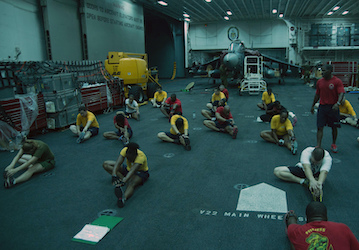There are two types of recovery after exercise: active and passive. Active recovery involves actively doing something such as foam rolling, light exercise, stretching, or massage. Passive recovery is purely rest such as when you’re sitting, lying down, or sleeping. Active recovery can help reduce delayed onset muscle soreness (DOMS) after exercise and aid with the repair process as your muscles rebuild. Here are a few different types of active-recovery methods you can easily work into your exercise plan.
Use foam rolling for soft-tissue mobilization
Foam rolling is a type of massage that can help reduce muscle soreness after exercise and improve your flexibility. Many people don’t like foam rolling because it can hurt, but as long as you don’t roll over an injury, it can help relieve your soreness faster.
Do light exercise to improve recovery
Light exercise at the end of your session works to clear out some of the lactic-acid buildup that contributes to muscle soreness and slows the rebuilding process. For the last 10–15 minutes of your workout, try to drop your intensity to about 50–60% of your maximum effort for an active-recovery period. Recovery exercise works best if it matches the type of workout you train for. So, if you’re a rower, you’ll want to erg at around 50% of your maximum power output. And if it’s “chest day,” add some light chest exercises to the end of your routine to cool down.
Stretch it out
Stretching can help improve your flexibility at the end of your workout when your muscles are warm. It might not be the most effective way to reduce soreness, but when combined with massage, stretching can help reduce fatigue after working out. Tip: Practice mindfulness while stretching to help reduce stress.
Try cold tubs to reduce soreness
Ice baths (also known as cold-water immersion) are a shock to the system, but once you get into the habit of getting in for 10–15 minutes after working out, it can become something you look forward to. Ice baths can reduce muscle soreness and fatigue, getting you ready for your next workout session sooner. Try dumping a few trays of ice into a tub of cold water for your homemade cold tub.
There are many ways to build active recovery into your exercise routine. For instance, try adding lower intensity exercise or some foam rolling to optimize your workouts and reduce DOMS in the day or two after. Keep in mind the best type of active-recovery technique is the one you think is most helpful.
